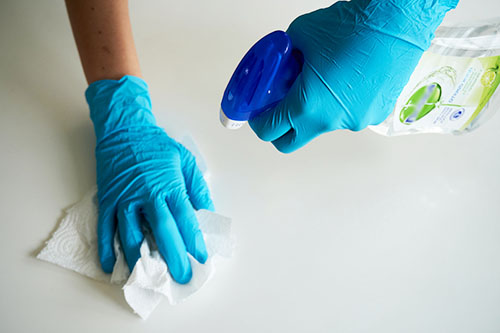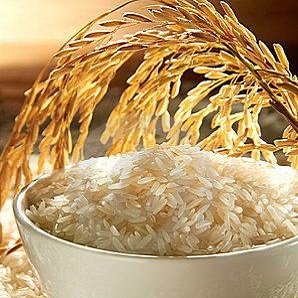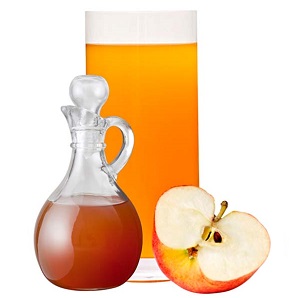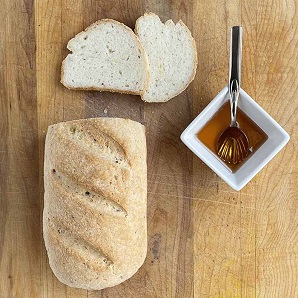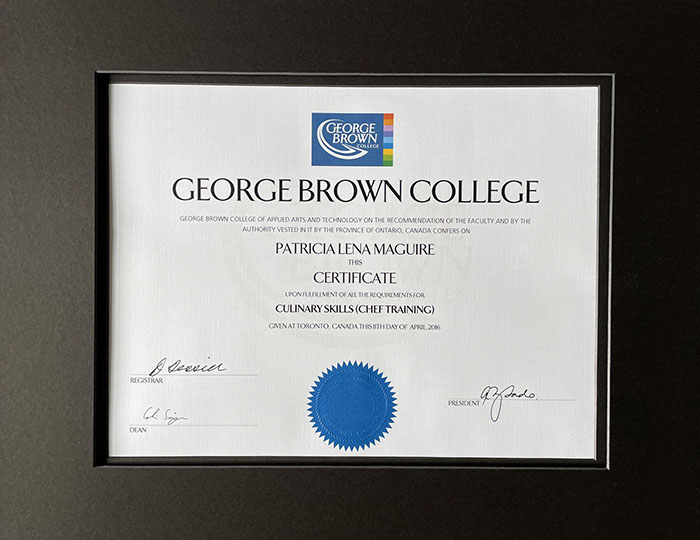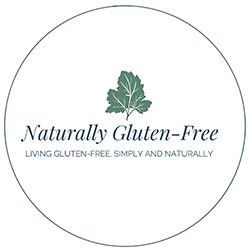- Home
- Gluten Free Kitchen
- Gluten-Free Pantry Purge
Three Simple Steps to a Safe and Organized Gluten Free Pantry
Have you been putting off the job of making your pantry gluten-free?
I don't blame you. It's a big job and not for the faint of heart. But you are not faint of heart and you have support, me.
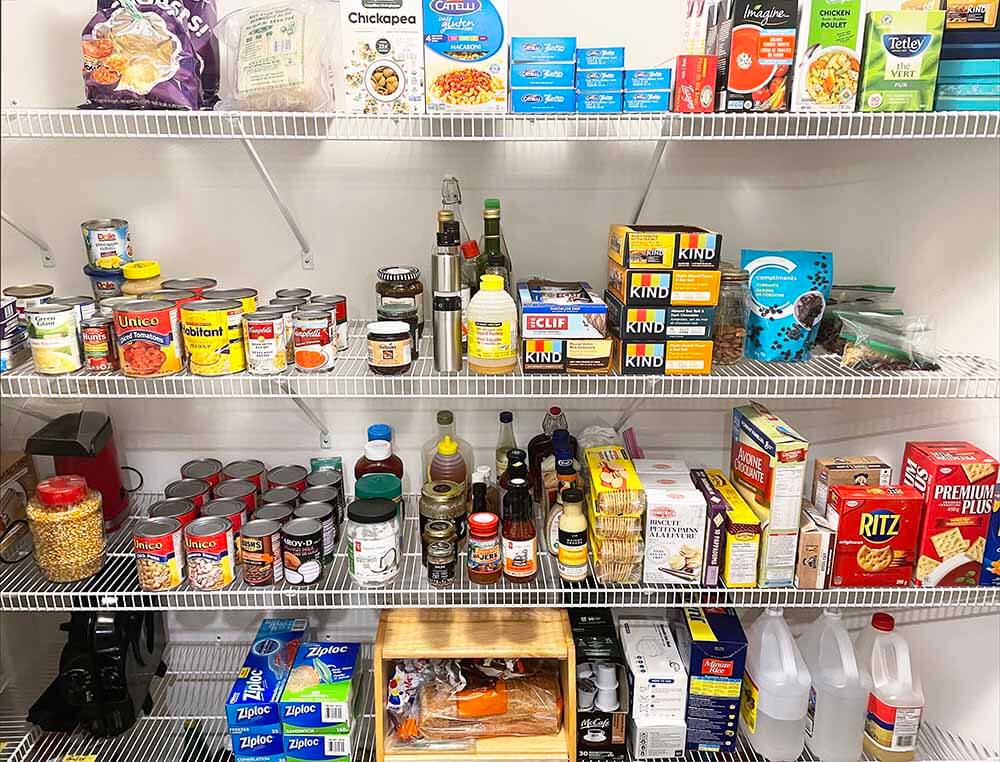 This is a mixed pantry. Mostly gluten-free with a few groups of gluten items. Can you spot them?
This is a mixed pantry. Mostly gluten-free with a few groups of gluten items. Can you spot them?Approaching this may make you feel like you're stepping into a horror movie. I'm here to encourage you and help you to have the confidence to take on this task trusting that it's not as hard as you think. Be aware though that doing this may bring up some emotions as you say goodbye to some old friends that will no longer be a part of your life.
Gluten Free Pantry or Mixed Pantry?
To say that you're creating a "gluten free pantry" might be a bit misleading. Most people with celiac or gluten intolerance live in the real world with families who eat gluten. You need to decide what will fit with your life, but chances are, you'll end up with a mixed pantry that is mostly gluten-free, but with a few gluten items that will be well controlled and kept in one or two designated spots.
Here are the three steps to your (mostly) gluten free pantry. Skip to the topic that interests you or read through to see the whole project.
Give yourself some time because you’ll need to go through each and every item, read the label and decide if it stays or goes. Arm yourself with your gluten free food list, your country's food labelling guidelines, and your laptop, tablet or smartphone to look up any brands you’re not sure of, then dig in.
If you live in Canada you can trust labels.
Go here for health Canada's guidance on gluten free labelling and here for a comprehensive guide from the Canadian Celiac Association.
If you live in the US, here are the USDA guidelines
If you live in a country with less strict guidelines then you'll want to look up every brand or even call the manufacturer.
Step 1: Sort
Make three piles
The easiest and most efficient way to do this is to make space on the counter or table and create 3 groups:
Gluten-Free, Keep: This is for anything in your pantry that is already gluten-free and safe for you to eat. Keep cross-contamination in mind. Cornstarch for example is gluten-free, but if you've ever dipped your spoon in the cornstarch after dipping it in flour, then it has to go in one of the other piles. Same goes for the big jar of bread-crumb contaminated peanut butter.

Gluten-free,
|
Contains gluten, keep |
Contains gluten, toss |
Contains Gluten, Keep: Let's face it, food costs money. Why throw out stuff you don't have to if the glutenous ones in the family can can eat it. Items in this pile will fall into two categories. 1. Items that you'll let the family use up then you'll switch to gluten-free for everyone. Things like soya sauce, barbecue sauce, pasta, maybe some frequently used spices. 2. Items that the glutenous ones like and you'll probably continue to buy. A favorite breakfast cereal, bread, a favorite sauce or ramen noodles.
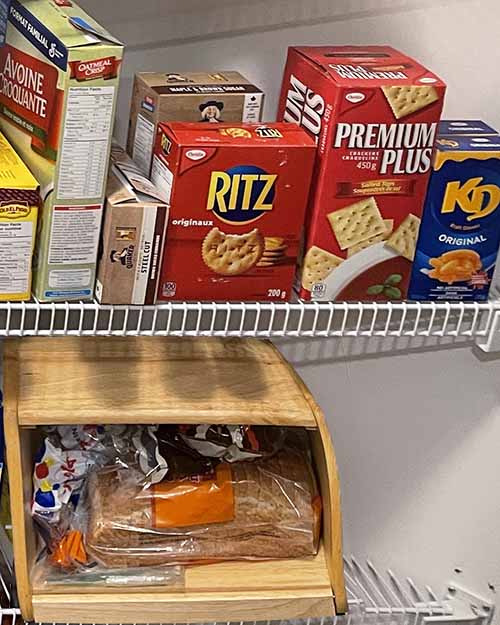
Contains Gluten, Toss: These are the things that just aren't worth the risk and you've decided they need to go. They have no home in your (mostly) gluten free pantry. That cross contaminated cornstarch, any spice blends that contain gluten, wheat flour and and baking mixes, were in this pile for me. Do you think I was about to bake for them when I couldn't have any...ha ha, fat chance.
Do you think you'll continue to bake with wheat flour?
I'm not about to tell you what to do but consider this:
- Flour is tiny particles that get into nooks and crannies and is difficult to clean out.
- Flour can stay air-borne for 12-24 hours, so even if you clean thoroughly after baking you'll still have dust settling afterward.
- If you're working with dough, it can get under your nails and in your clothes.
You may find that it's still worth it. I've done a little wheat baking for special occasions, but for the most part, wheat flour is not allowed in my home or my (mostly) gluten free pantry. It stresses me out too much. If the glutenous ones want baked goods we can buy them and they can clean up the crumbs ;)
Suggestions and things to watch for:
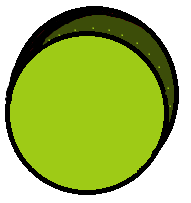 |
Spices: Are naturally gluten- free although some may be processed in facilities that also produce products that contain flour. Check the labels but for the most part spices may remain in your gluten free pantry. |
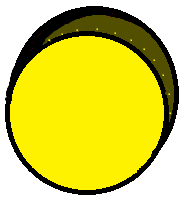 |
Spice Blends: Be careful. Even if you recognize the brand, many blends contain gluten. Check the labels |
 |
Oils: such as olive oil, coconut oil, salad oil etc are naturally gluten-free |
 |
Vinegars: Are naturally gluten free except malt vinegar which is likely made from barley malt. |
 |
Baking Products: such as baking powder or baking soda.
|
 |
Packaged Mixes: such as marinades or gravy mixes, sauce or dressing mixes. Read every package carefully. If in doubt...you know. |
 |
Puddings, Pie Fillings, Jelly Powder: Probably okay, check labels to be sure. |
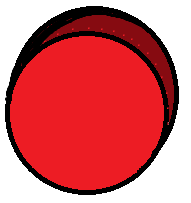 |
Cake and Muffin Mixes: Most likely contain wheat flour unless they are specifically gluten free. Decide if they go in the gluten-keep pile for the family or the gluten-toss pile. |
 |
Spreads like Peanut Butter, Jams, Jellies etc: |
 |
Bottled Sauces: Many are naturally gluten-free. Check labels. If gluten-free and uncontaminated they're keepers. If they have gluten they can go in the "gluten, keep" pile for the family to use, then replace with gluten-free brands. Look for soy sauce or Worcestershire sauce as an ingredient. |
 |
Canned Goods Like Vegetables, Fruit, Soups etc: Many are naturally gluten-free. Check labels. If gluten-free and uncontaminated they're keepers. If they have gluten they can go in the "gluten, keep" pile for the family to use, then replace with gluten-free brands. |
 |
Dried Beans, Pulses and Legumes: These are naturally gluten-free but may be a contamination risk depending on local farming practices. Check for recommendations from your country's celiac association. The Canadian Celiac association recommends to look for a gluten-free claim but if you can't find any then wash well and pick through for any foreign grains. |
 |
Rice: Is generally safe as it's not usually grown with gluten grains. Still check the label for any "may contain" statement, but a gluten-free claim is not necessary. |
 |
Oats: Are a high risk for contamination. Only buy oats with that are certified gluten-free. If you have oatmeal or other oat products that are not gluten free, they can go in the "gluten-keep" pile for the family to use up. |
 |
Other Naturally Gluten-Free Grains: Like millet, amaranth, teff, buckwheat etc. These may also be a contamination risk. Check for recommendations from your country's celiac association. The Canadian Celiac Association recommends to only buy grains or grain products like pasta or breads with a gluten-free claim on the label. |
Check labels, even on green light items. This is just a guide.
Step 2: Search and Destroy
Every last molecule of gluten.
Now is the time to clean your gluten free pantry, thoroughly!
Fill the sink with nice hot soapy water and get a clean cloth. Wipe every shelf right back into the corners. Do the walls and the bottoms of the shelves. Rinse your cloth often and change the water often. Any cupboards that have had flour or flour based baking mixes in them need special attention. Flour is sneaky and finds its way into nooks and crannies.
If you have non-food items in there like small appliances, dishes, baking equipment etc., that all needs to be pulled out and washed.
When you're done, go over everything again with clean cloth and clean water or with spray cleaner and and a paper towel. Then cloths go right in the laundry and paper towel into the garbage.
Step 3: Replace and Restock
Before you start putting things away, take a look at the "gluten-toss" pile and the "gluten-keep" pile to see what you need to replace with an un-contaminated gluten-free version. Your gluten-free food list can help you here. Start your grocery list.
Putting Away the Piles
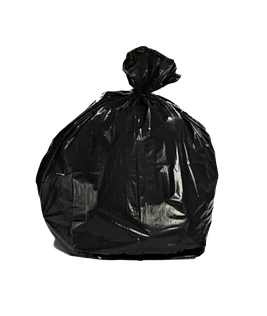
The "toss" pile is easy.
A big garbage bag should do the trick.
If you have jars or recyclable containers, you may want to empty them and take them to the recycle bin.
The "keep" piles take a little more thought,
Take a look at the cupboard space and what’s left in the gluteny “keep for the family” pile and the gluten free pile.
Consider what you’ll need to buy and determine how much space gluten free food needs versus the gluteny stuff.
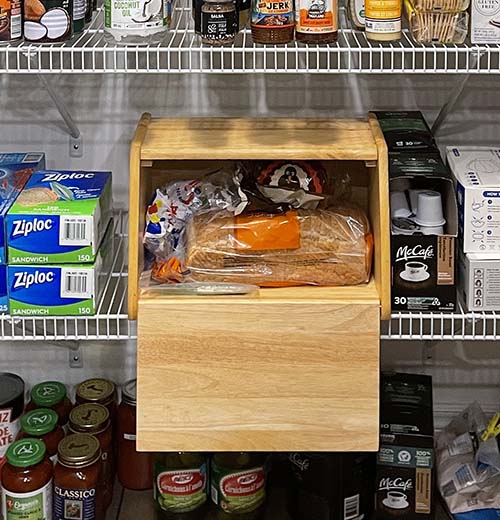
You may want to keep them in separate cupboards, or on separate shelves, or maybe a basket system works for you.
My (mostly) gluten free pantry has a bread box for wheat bread so I don't worry about crumbs getting on or in the gluten free stuff, then an area on one shelf where the wheat cereal and crackers live.
My gluten-free bread is kept in the freezer.
You'll change and rearrange a few times over the coming months. I started out about half and half gluten free and gluten shelves in my pantry but as I started cooking more gluten free food for the whole family and replacing items over time, now there is only one small section plus the bread box items containing gluten.
Label the shelves clearly and make sure everyone puts stuff away properly.
As you’re putting items back in the pantry wipe all the containers. Also, anything that is gluten-free but contaminated should be labelled and kept with the gluten items.
Summary
Let's summarize the steps
Step 1 - Sort
- Make 3 piles: gluten-free, gluten-keep, gluten-toss
- With your food list, go through everything in your pantry, read all the labels and put each item into one of the 3 pile
- remember cross contamination
Step 2 - Search and Destroy
- Every molecule of gluten. This means clean your pantry thoroughly
- Go right into the corners, walls, even the bottom of the shelves
- Clean any other items that might be in the same cupboard
Step 3 - Replace and Restock
- From the gluten-keep and gluten-toss piles, make a list of what you need to buy
- Organize your pantry so you know where the gluten items are
- Wipe every bottle, can, package as you put it away.
Next, on to the refrigerator
Don't put that bottle of wine back in the fridge just yet. You've just completed a big job and you deserve a reward!
Same process for the fridge. Go through everything and create piles. Item’s like jams and spreads may be contaminated so replace and / or label as appropriate. Wipe down the shelves and wipe all the containers as you put them back.
Home > Gluten Free Kitchen > Gluten Free Pantry
